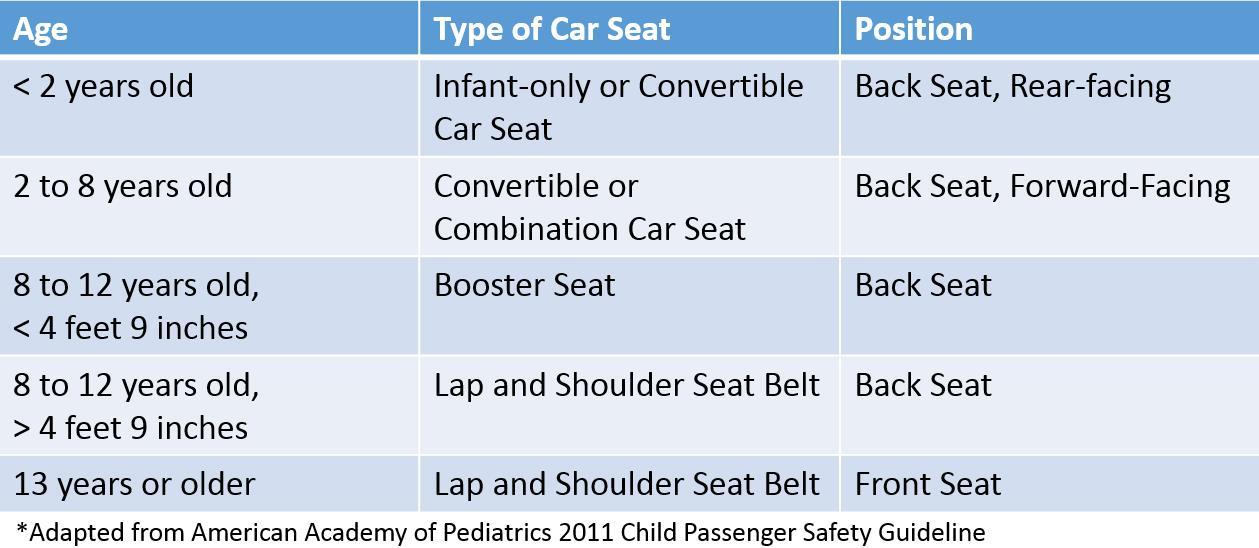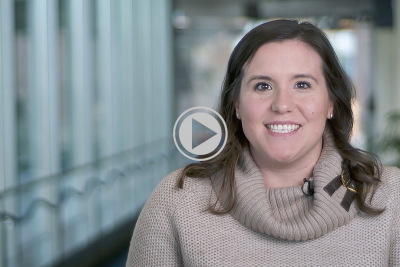 I’ll admit it– when it comes to car seats, I just can’t practice everything I preach.
I’ll admit it– when it comes to car seats, I just can’t practice everything I preach.
As a pediatrician I recommend that kids stay in a five-point restraint car seat until age 8, in accordance with the research-supported guidelines of the American Academy of Pediatrics. When you finally graduate from a car seat you’re still supposed to stay in a booster seat until you’re 12 years old or 4 feet 9 inches.
As a mom, I’ve never actually met anyone following these recommendations. If you are following them, please comment below and let us know how you’re doing it.
Here’s the official carseat and booster seat guidelines from the American Academy of Pediatrics:
To be clear, I do follow state car seat laws. Laws differ by state, and almost every state is more lenient than the AAP’s recommendations. So please don’t call the Department of Family Services on me… It’s just time for an honest conversation about car seat safety recommendations, why most of us don’t follow them, and how we as parents can do a better job keeping our kids safe in the car.
Here are 6 real-life reasons why people don’t follow car seat and booster seat recommendations, and the solutions I’ve found that actually work.
1) No one else is doing it: I volunteered to drive for my daughter’s 2nd grade scout field trip. Of the five 7-year-olds in my mini-van, only two were still in booster seats and none were in car seats. The kids balked when I said they at least needed a booster seat if I was driving, and their parents said they didn’t even own booster seats. I scrounged up two car seats and three booster seats and strapped everyone in. My daughter complained that I was weird and I had embarrassed her.
The solution: Tell real stories about why car seats work. I told all those kids (and their parents) a few stories about kids who died from abdominal bleeding when their regular seat belts cut into their abdomen during car accidents. The complaining stopped. We don’t make these recommendations to be mean– there are true stories and real science behind these car seat rules.
2) It’s too hard to figure out all the rules: Even pediatricians have a hard time memorizing this stuff, and the recommendations change every few years. The American Academy of Pediatrics recommendations differ from state law, which differ from recommendations of the car seat manufacturers. And then there’s all those practical questions for which there are no clear recommendations– like where to put a second car seat, and what to do if a car has no back seat.
The solution: Find your local car-seat inspection center and call them and/or stop in for a free car-seat check. St. Louis Children’s Hospital offers many Safety Stop locations throughout the St. Louis area. To schedule an appointment, call 314.454.KIDS (5437). Outside of St. Louis, you can usually find free car-seat check services through your local police or fire department.
3) Kids grow out of most car seats: Many car seats are only intended for kids up to 40 pounds. Once a toddler is too heavy for the car seat most parents just buy a booster seat instead of another car seat intended for heavier/older children. Who wants to pay $85+ dollars for a heavy car seat when Walmart sells a $15 booster?
The solution: Buy a convertible car seat that is approved for kids up to 120 pounds. Our family prefers the Radian brand because they fit three-across in the back of a sedan or mini-van. We do use an infant detachable “pumpkin” seat when they are tiny, but once they are too heavy for it we switch them to the Radian. Which brings me to the next problem…
4) All those car seats don’t fit in my car: When I had my third child I thought I would have to buy a mini-van just to fit all the car seats. Then we figured out how to fit three car-seats in the back of a Honda Civic.
The solution: There are many brands of car seats that fit three-across in the back of a sedan, SUV or mini-van. We prefer the Radian brand for this feature, but there are many others. You have to do something called “puzzling” to get all three installed, but it’s cheaper than buying a new vehicle to fit the kids. (We did eventually buy a mini-van, but managed to hold off until we were expecting our 4th child).
5) Rear facing until age 2 just stinks: They kick the back of the seat with their muddy shoes. They cry and arch their back when it’s time to get strapped in.
The solution: mirrors, toys, and seat back covers. Install a mirror on the seat back that the baby is facing, so they can look at themselves and you can see them in the rear-view mirror. Use a soft-sided plastic mirror so that it doesn’t hurt the baby if it comes loose. Get a plastic cover for your seat-back to keep it clean. Keep a zip-lock bag of baby toys hidden in your car so that you have a novel prize/distraction for the baby each time they get strapped in.
6) Car seat are dirty, heavy, and a pain-in-the-neck: They make marks on your vehicle’s upholstery, and every time you pull one out you find toys, moldy food and that thing you’ve been looking for since last April.
The solution: Put a car seat mat or even just an old towel under the seats before you install them. Then, when you pull them out, just shake all the junk to the middle of the towel, pick out the stuff you want to save, and dump the rest in the trash.
I know you’re wondering, what are the car seat recommendations that I DON’T follow? The hardest part for us is keeping kids in a 5-point restraint car seat until age 8. Around age 6 or 7 they start begging to just ride in a booster once or twice, usually because they are catching a ride with a friend who doesn’t have a car seat. Once we’ve permitted them to ride in a booster they really fight the car seat. I’ve compromised and bought highback belt-positioning booster seats. I know, it’s not the safest plan. Any recommendations?






Great post. You are the real authority on this. Mom
i am also a pediatrician and I follow these guidelines. Well, not by age, but by weight. Age is a ridiculous standard since an 8yo can be tiny or huge. My soon to be a second-grader son is staying in his full 5-point restraint Diono Radian until he is 65 lbs and then in the booster until 100 lbs. My son’s life is worth any argument. He has given up fighting about it but when he did my answer was “because I love you.”
I follow this, and I know lots of other moms who do as well. My 7 year old just recently outgrew the harnesses on his combination seat, and so is now in a high back booster. My 5 year old is still harnessed, and my 21 mo old is still rear facing and will be until he outgrows the RF limits of his seat. It’s not hard, at all.
Ridiculous! We were out of car seats by age five in the 80s and we lived to tell about it. Why do today’s kids need so much coddling and protection?
Worst argument ever. All the kids who didn’t survive to adulthood because of fatalities are not able to leave comments to counter your point. We have more data now and know more now. It can go too far, but ultimately it comes down to whether you want to risk it.
I have an 11 year old who still sits in a booster because she doesn’t meet the height requirement. How do we do it? She doesn’t have a choice. We, as the parents set the rules. I’ve been in a few bad car accidents and it’s my responsibility to keep my children safe.
What about full grown adults who are either short or thin? Are they supposed to put a booster in the front seat? I agree that you should keep kids safe in the car, but if the seatbelt lays on them in the same way does for an adult, it’s going to help. At some point, you have to come terms with the fact that cars are giant weapons that people use irresponsibly. If you really want to protect your kids, go Amish. Otherwise, accept that there is risk and don’t embarrass your 4’8″ 11yo with a booster seat, pretending like the dangers and risks somehow end upon exiting the car.
The bone density of a child is much lighter, making them more prone to injury in a crash. This is why children need boosters, whereas an adult of a similar weight/height does not.
My fifth grade, nine and a half year old is still in a booster. There has never been an argument about it, because I don’t think she’s ever seen it as a negotiable, it’s just how it is riding in the car.
And for the record, as a school volunteer and Girl Scout leader, I often have other kids in my car. Nobody has ever made fun of her for having the booster- I don’t even think they really notice it.
But again, if the seatbelt is sitting the correct position without a booster, how does bone density change anything? Does a booster seat somehow strengthen their bone density? A seatbelt in the correct position without a booster seat is going to have the same impact on the bone as a seatbelt in the correct position with the use of a booster seat.
Sorry for the confusion. My remark about bone strength was meant to address why small adults are NOT required to use boosters (i.e.: because the bones of a 4’8″ twenty-year-old are stronger and less likely to break than the bones of a 4’8″ ten-year-old.)
Point is, seat belts typically don’t fit properly until the child has reached at least 4’9″. Of course, as you mentioned, this will vary from car to car; we all have to use our best judgement as to whether it’s necessary. There is a 5-step fit “test” to help caregivers make this decision. Age guidelines are likely included as well simply because they are an easy to remember and understand benchmark.
Once a child ages out of car seat laws, of course, caregivers can do as they choose, but if in doubt, why not choose the safest option possible?